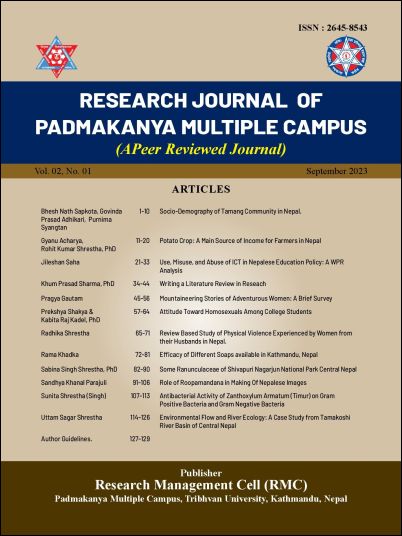Efficacy of Different Soaps available in Kathmandu, Nepal
DOI:
https://doi.org/10.3126/rjpkmc.v2i1.62994Keywords:
Hand wash, Soaps, test bacteria, Agar well diffusion methodAbstract
The main objective of this research was to assess the antibacterial activity of commonly used different soaps. Altogether 8 different types of soaps which were used in our daily life were collected from market of Bagbazar, Kathmandu and processed in the Microbiology laboratory of Padmakanya Multiple Campus from June 2022 to August 2022. Agar well diffusion method was done for studying antibacterial activity of soaps against the bacteria cultures of Staphylococcus aureus, Bacillus cereus, Escherichia coli, Klebsialla pneumonia, Salmonella Typhi, Pseudomonas aeruginosa, Enterobactor spp, Proteus mirabilis and Shigella dysenteriae along with ATCC culture of Staphylococcus aureus (ATCC: 25923) and Escherichia coli (ATCC: 25922). A cork borer of 7mm diameter was used for preparing wells in MHA plate in which 70μl of soap samples (100mg/1ml) along with positive control (Ofloxacin) and negative control (distill water) were pouring then incubated at 37°C for 24 hrs to 48 hrs. After incubation, clear zone of inhibition was measured in which antiseptic soaps were found to be highly effective for both Gram positive and Gram negative bacteria than other soaps. For total bacterial load reduction (before wash hand and after wash hand with the soaps) from hands of students, antiseptic soaps S1 and S2 showed the higher reduction of bacteria which was 91.3% and 95.91% respectively. It was concluded that hand washing with soaps reduced the daily encountered bacteria as well as human pathogenic bacteria.




